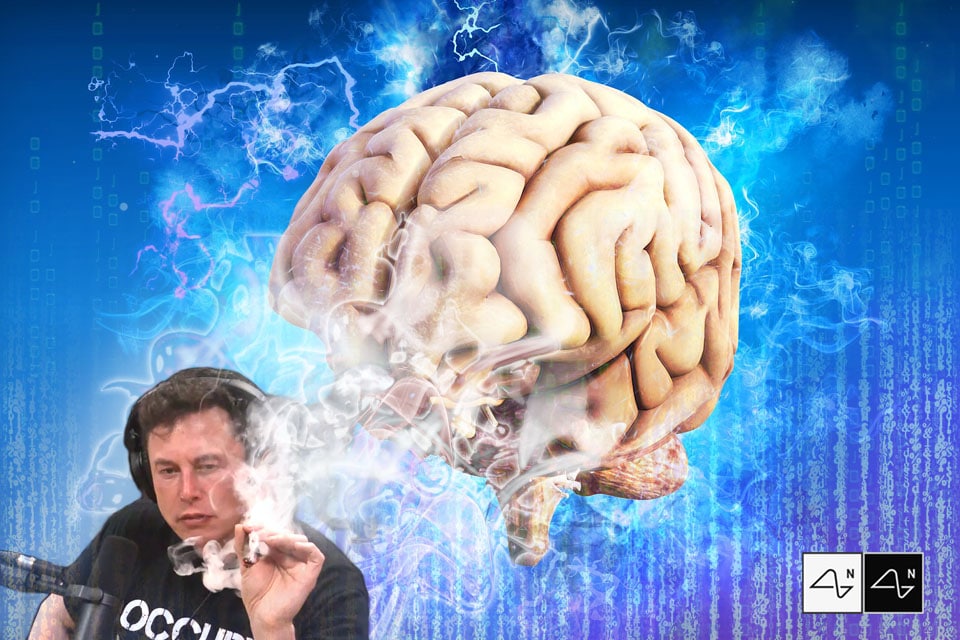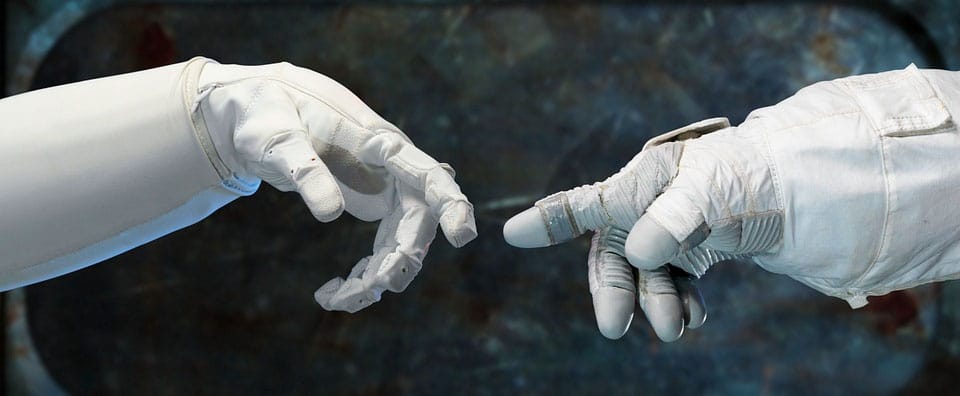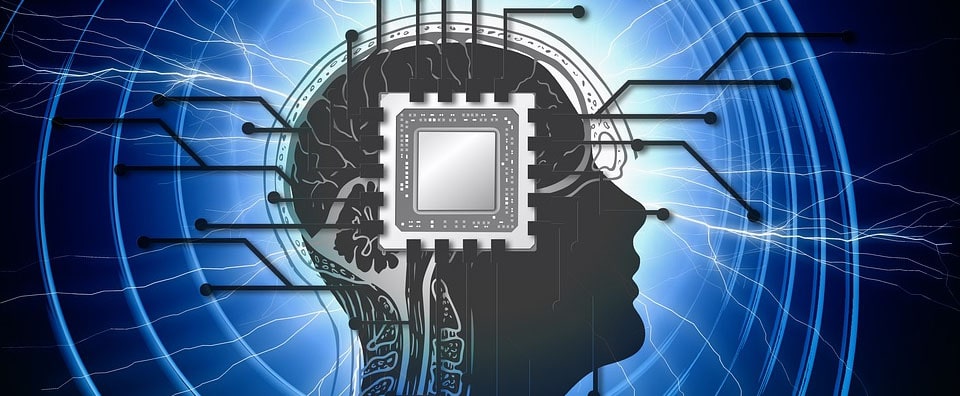Just install a Neuralink
The word psychedelic, coined by psychiatrist Humphy Osmond in 1956, means “mind manifesting,” being a portmanteau of the Latin word psyche (meaning mind or spirit) and the Greek word dēlos (meaning manifest.) Osmond was a pioneering researcher who studied the effects of LSD on alcoholism, and his phrase for this special class of mind-altering substances not only edged out his friend Aldous Huxley’s clunky alternative “phanerothyme”, but also usurped the previous word for these drugs— “psychotomimetics”, which means “mimicking psychosis.” As it turns out, we have Osmond to thank in part for shifting our understanding of psychedelics as tools that can manifest hidden parts the mind or soul, rather than dismissing them as perplexing drugs that make us psychotic.
Language is code, and words do matter. Software, being a collection of code, is bound by the language in which it is written and the limits of its vocabulary and syntax. One could say that all software impacts our consciousness in some way, from grandma’s dopamine-fueled enjoyment of a casino game to the banal ubiquity of spreadsheet programs at shitty office jobs everywhere, to the way that weaponized Facebook ads affected elections in 30 countries. But thanks to Elon Musk and other pioneers in brain-computer or brain-machine interfaces (known as BMI), software, in conjunction with brain-implanted hardware, will soon have the power to impact our psyche directly, at the level of our neurons.
As revealed in great detail at a recent launch event, Neuralink is a BMI device that consists of a small computer chip that gets implanted into the brain, with dozens, or eventually thousands of tiny electrodes that are precision-inserted into the brain by an advanced neurosurgical robot. These electrodes are connected to the implanted computer chip by 5 μm wide threads, which are 1/10th the width of a human hair, and they have the ability to both read when neurons are firing (called neuronal spikes) and to directly stimulate neurons to fire—literally to manifest things directly into the brain. The more electrodes that are implanted into the brain, the more clearly the mind can be “read” and “written” to, both recording our brain’s activity and stimulating us to think, feel, and perceive things by activating networks of neurons.
It sounds like science fiction, but this technology is very real. What does this actually mean in practical terms? To start with, people will be able to move cursors with their minds—a feat that, according to Musk, monkeys have already achieved during primate trials. Amputees will be able to control robotic limbs with their thoughts, not only outputting commands in real time but also feeling sensory input related to what their limb is touching. People with neurological disorders will have access to breakthrough therapies that ameliorate their symptoms through algorithm-driven brain stimulation and regulation.
But that is just the very beginning, child’s play. The implications of brain-computer interfacing are nearly unfathomable. Imagine that everything on the internet is instantly available to you at the speed of thought. Imagine downloadable experiences, sharing your thoughts instantly with others, or learning Kung Fu just like Neo… yet that is still only the event horizon.
Imagine being able to read and write consciousness. Any game or app you can fathom, imagine it in your brain rather than on your phone… and any malware, too. Imagine programs and viruses that can deliver the heights of bliss and the cruelest and most unusual tortures. But we haven’t even gotten to the summit yet!
The primary reason Musk is choosing to develop Neuralink, and presumably why he sees this project as being at least as important as weaning humanity off of fossil fuels and getting our civilization to Mars, is because it conceivably offers a way for humans to merge with artificial intelligence (AI) rather than being left behind as intellectually inferior midwives to the next evolutionary leap in complex sentience within the known universe. Musk believes it is imperative that we find a way to internalize AI so that humans are not outcompeted and hopelessly outgunned by a rogue AI that sees humans as expendable ala Skynet, or by a misguided AI that decides to turn all of Earth into paperclips or gray goo. AI is a heady thing to think about, but many highly intelligent people consider it to be one of the biggest threats or potential boons to humanity, with the capacity to usher in either human extinction or human advancement beyond measure. In other words, if we can’t hope to beat it, we should probably join it.
In the previous century, we forever altered the course of human history by harnessing the atom. Now, we are on the brink of harnessing the neuron and the microchip to manifest data directly into our awareness. While it is still early days, we seem to be opening a Pandora’s box that will inevitably lead to the ability to generate experiences—thoughts, sensations, and impressions—directly into the human brain, to achieve symbiosis with superintelligences, and to increase the speed of human-computer input from the flailing of digits to the speed of thought. What could possibly be more psychedelic—mind manifesting—than that?
Let’s take a speculative journey into the positive and negative outcomes that such a technology could produce, and why psychedelic experiences may play an important role in this leap in human evolution.
Positive Impacts
According to Musk and the Neuralink team, the first applications of this technology will be to produce breakthrough medical treatments. Their initial focus will revolve around helping paralyzed people to interface with computers, helping amputees control appendages, and generating novel treatments for brain disorders like Parkinson’s, dementia, and Alzheimer’s. Other applications could include restoring sight to the blind, hearing to the deaf, and helping people with depression, chronic pain, or tinnitus. When working at the level of neurons, with the ability to control mood, memory, vision, somatosensation, and thoughts in general, the sky is the limit in terms of how many groundbreaking treatments we may find for nearly every condition.
Aside from these incredible medical advances, the ability of Neuralink to increase the bandwidth between human brains and computers will be paradigm-shifting. As Musk points out during the launch event, at present we can “download” information into our brains fairly quickly by viewing computer screens, but our “upload” speed is still achingly slow and dependent on how quickly we can type and move a mouse with our hands. We take this fundamental bottleneck for granted, but just imagine what accelerating it could be like. Productivity and gaming will no longer be about who can manipulate their digits the fastest, and will instead be about who can think and process information most quickly. And when it comes to processing information, if Neuralink is able to convey information at the meme-level rather than at the linguistic and audio/visual levels alone, or if it allows us to access Wikipedia as quickly and easily as recalling what we had for lunch, it opens up entire new frontiers in learning and education.
As human-computer bandwidth increases, we are likely to see early adopters of this technology become superusers, something like mentats in Dune who act as human supercomputers. Universities, militaries, and corporations will be keen to leverage this technology to exponentially increase their ability to explore scientific, academic, and strategic frontiers. Artists of all kinds will no doubt use it to explore limitless new creative potentials, with the ability to create art, literature and media at unparalleled speed and enhance it with new dimensions of brain stimulation. Information is everything, and since Neuralink will act as a force multiplier and allow exponential increases in our ability to generate and receive data, everything we can conceive of will be enhanced in some way by this technology.
Telepathy and Collective Consciousness
Now let’s get really psychedelic. During the Neuralink launch event, Musk mentions almost offhand that this technology will allow for some form of telepathy to be possible between users with interlinked BMI devices. If you think MDMA-assisted relationship therapy is a powerful way to share thoughts and emotions with a partner, imagine being able to share complex ideas and sensations instantly. Or heck, why not both at the same time? Whether this sounds exhilarating or terrifying, it seems that this will be a very real possibility.
But let’s not stop there, with simple 1-to-1 telepathy. How about group telepathy—teams of people who can aggregate their minds towards solving problems, coordinating efforts, or communing together as a group. Envision think tanks that are actual congregations of brains working to solve problems. Imagine that when launching your meditation app, you tap into a collective mind of thousands of other users who are harmonizing with each other to reach deep theta wave states. Perhaps most astonishingly, imagine that the Internet, which allows people to share data through pictures, video, virtual reality, and text now allows the instant sharing of thoughts. The idea of mainlining your brain directly into the Internet, Twitter and all, probably sounds horrifying and cacophonous. Will it be prohibitively overwhelming, or will something unforeseen emerge?
What does collective consciousness actually feel like? If you connect telepathically with another person and every thought and feeling is shared instantly, it will likely be scary at first, but could soon become liberating. My guess is that we will quickly realize, “Oh, I’m not the only one with crazy, random ideas and complex, far-ranging feelings about everything. Oh, they have doubts and fears too. They are afraid and hopeful just like me.” This kind of connection represents the pinnacle of empathy.
Perhaps the reason why the internet is so polarizing in its current state is because we are only sharing ideas in a shallow way, rather than all the way. Perhaps if we go all-in, the opposite will happen, and we will realize that we are not alone, that all of our struggles and hopes and dreams are shared by all—to love, to be loved, and to be seen and accepted in our fullness.
Out of all of the possibilities discussed in this article, this is the one that intrigues me the most. My favorite definition of love is “a recognition of unity” and in my experience (especially with navigating addiction and PTSD as a coach, and within myself) the truth really does set us free. If we were able to share our deepest truths with others, warts and all, it could be the antidote to fear, shame, trauma, and neuroses, which all develop from hiding away parts of ourselves from others. Judgement, violence, and exploitation would be eradicated too, because all of these human behaviors can only exist when we “otherise” people that we do not understand. If this technology allows us to understand others completely with radical transparency, all lies, all exploitation, and all violence would cease. If an attacker (be they an internet troll, a bully police officer, or a jihadi) literally felt the physical, mental, and emotional effects of their verbal or physical violence as they were enacting it, violence would become impossible.
This idea that we will be able to share the deepest parts of ourselves in an instantaneous and transparent way is not just the mad conjecture of this psychedelic journalist. Comedian, podcaster, and fellow armchair futurist Joe Rogan has brought it up often, as has psychedelic luminary Terence McKenna (although he spoke of it in the context of virtual reality, back when that was the breakthrough technology and BMI was not yet on the radar.) We seem to be craving unity with technology and unity with each other simultaneously, and while this kind of leap will not be quick or easy, it seems inevitable. At the risk of sounding grandiose, perhaps this is the nascent first step of humanity becoming a Type 1 civilization that is no longer at perpetual war with itself and its home planet.
The thing that excites me about these informational technologies is I think we’re going to be able to use virtual reality to show each other the insides of our own heads. This has never been possible. We know each other by our surfaces and our symbols, we make small mouth noises and we assume we share the same dictionary, and by such rickety infrastructure as this we build community and understanding. What if everybody worked on the mansion of their soul in cyberspace, and you could invite people in? You want to know who I am, I’m not this 6’2” piece of meat, that’s not it, here’s what it is, here’s my hopes, my dreams, my fears, my past accomplishments, my unfinished projects, my catastrophes. [This would create an] incredible amount of intimacy, and hence, mutual appreciation and empathy. The whole thing is bandwidth. Bandwidth simply means on one level the speed which information is moved from one point to another, but in experiential terms what bandwidth means is how deep the image is. A telephone call is very low bandwidth, a television-assisted phone call is higher bandwidth. As we expand bandwidth between each other we will dissolve our differences. This is my faith. I think it’s amazing that we built a global civilization in an environment of 4,000 languages, and no better mode of communication than small mouth noises and their electronic equivalence. We’re about to take an enormous leap toward understanding each other. What we will understand, I don’t know.
-Terence McKenna, “The Evolutionary Importance of Technology” 1996
The Risks
But let’s rein in the optimism for a minute and look at the dark side of where BMI devices like Neuralink could lead us. Where can we even begin when describing the potential for this kind of technology to cause harm? To start, imagine that every form of torture could be delivered by cookie to an unfortunate soul with a compromised BMI. Now, just briefly, realize that there are essentially infinite novel ways that malicious souls might create to inflict pain, suffering and madness. But as terrible as that is, what might be worse is the blade we do not see.
Coercion, thought regulation, censorship, and persuasion are all regularly used in the playbooks of governments, corporations, and covert agencies. It’s one thing for China to block access to Tiananmen Square information and footage on the Internet, but it is an entirely other thing to prevent people from being able to even think about it. We need not look to authoritarian regimes to be frightened by this, for the “free world” is under the influence of it too; it’s just better hidden.
Major news outlets and recent documentaries have covered how Cambridge Analytica harnessed millions of people’s personal data and psychological profiles to target persuadable voters and inundate them with ads to shift their votes in elections for Trump, Brexit, and over 100 other campaigns all over the world. Intellectuals and media figures wax regularly on how social media algorithms, which are tuned to elicit engagement, end up provoking controversy, outrage, and polarization. In allowing ourselves to be advertised to for the sake of free access to platforms like Facebook, Google, and Twitter, we have taken ourselves down a dark and unknown road. What if the best platform for BMI’s follows suit, and gives their services away for free in return for stimulating you ever so slightly towards their corporate sponsor’s products? What if buying ads on that platform consists in placing subconscious thoughts? We already have one foot in that rabbit hole and definitely do not want to slip all the way into it. Instead of making jailbreaking your brain a thing, let’s just agree that building that perverse jail cell is a nonstarter. It’s hard enough to keep propaganda and corporate influence out of our brains as it is; it will be nigh impossible when it is delivered via neuronal spikes.
Even if Neuralink manages to avoid these pitfalls for the common user, let’s consider what governments, terrorists and other militant groups might try to accomplish. How about telepathically-linked supersoldiers who feel no pain? Generals and warlords with the power of mentats. Terrorist malware that makes everyone it infects brain-dead ala Snow Crash. Advanced interrogation techniques that make waterboarding look like a fun day at the water park. Virtual gaming and interactive pornography experiences that are so titillating that the rise in gaming, screen, and porn addictions goes exponential and severely impacts society? Mass infatuation with artificial realms and experiences so great that we just find better ways to trigger dopamine responses rather than trying to fix social, environmental and political issues that continue to put the planet at risk. What if BMI is so entrancing that it becomes the Soma that Aldous Huxley warned us of in Brave New World?
We don’t need to dwell any further on the potential risks of this technology, but needless to say, they are numerous and twisted, and bear considering long before they are allowed to become reality.
Neuralink and Psychedelics
Now that we’ve looked at potential positive and negative outcomes with BMI technology, let’s bring the discussion back to psychedelics, and why they are relevant in these discussions about Neuralink.
While concepts like group telepathy, access to infinite realms beyond time and space, and merging with superintelligent entities may sound like science fiction to most people, at your local ayahuasca center it’s about as strange as hearing that the sun rose in the morning. In fact, group telepathy under the influence of ayahuasca has been so commonly reported that the alkaloid in the ayahuasca vine Banisteriopsis caapi now known as harmine was originally called telepathine. Psychonauts with direct experience of this phenomenon—real or imagined—may have an easier time assimilating to direct brain-to-brain interfacing.
Psychedelic users also regularly report interactions with superintelligences described as the God, ancestors, the Gaian mind, alien entities, or the “spirit of the plants.” As my good friend and Erowid columnist Teafaerie describes of her iboga experience:
…I did persistently have the sensation of being in communion with a very wise and exceedingly complex entity. As ever, I couldn’t tell if the blazing intelligence that I seemed to be communicating with was literally the spirit of the Plant Teacher itself, or if that particular plant’s alkaloids are simply keys that unlock a program that is actually stored on my own genetic code somehow, or in the collective unconscious, or in the cloud. It presented as something with which I could have an intelligible conversation, though.
As with telepathy, interfacing with a “wise and exceedingly complex” AI within our own minds is far more of a familiar territory for psychonauts who have already had such experiences. Even if the actual BMI-AI synthesis experience is categorically different from an iboga-induced mystical experience, people who are familiar with the general territory may be able to assimilate this experience far more quickly and easily than those who have had nothing even remotely analogous to that experience.
In essence, the psychedelic experience may be the best analogy for the BMI experience, and the most accessible training ground for preparing ourselves for it. Beyond the similarities mentioned above, psychedelic users generally tend to develop an increased level of “openness to experience” as shown in research at Johns Hopkins University. Psychedelics also increase neuroplasticity—that is, the ability to think more freely and make novel connections across brain regions, especially when learning. Considering how trippy integrating a BMI may be, it is not at all far-fetched to think that Neuralink may select for users who have psychedelic experience in their beta tests, or even consider integrating careful psychedelic use during the beginning phases with BMI to enhance the learning process.
The capacity for psychedelics to accelerate learning is something that I can attest to from personal experience. My initial learning of the art of poi spinning and fire dancing, which requires reflexes, proprioception, and activation of the corpus callosum, was greatly enhanced through a few pivotal psychedelic experiences. I was able to intimately feel and understand the way that centripetal and centrifugal forces were at work through the rotating poi and my own hands and body, and integrate unfamiliar patterns of complex movements quickly and easily. The experience engendered a sense of becoming “one with the poi” and the physical forces at play, a feeling that has persisted ever since and which can be tapped into at any time. This is just one personal anecdote, but I know of hundreds of other flow artists who have had similar experiences. If this example seems frivolous, you can read about how psychedelic experiences lead to breakthroughs for Nobel laureates and high-level engineers. The takeaway is that we may find that the Neuralink learning curve could be similarly enhanced by mindful and focused psychedelic use.
If BMI-AI synthesis is an integral piece of humanity’s future, and it likely is, then building a healthy relationship with the psychedelic experience may be an evolutionarily adaptive behavior. Considering all of the other benefits that mindful psychedelic use provides, such as cognitive enhancement, reduction of the fear response, and improvements to mental health and creative problem solving, it already is. BMI adaptability is just a new and significant addition to that list.
Altering Altered States
As we reach the end of this strange journey into the possible future, let’s get really freaky. How will Neuralink be able to replicate or alter the psychedelic experience? Terence McKenna famously postulated that advanced virtual reality systems could offer a DMT-like experience without the need for ingesting any substance. Will psychedelics be made obsolete and turned into software with suitably advanced Neuralink apps? Can the mystical experience be “downloaded” by replicating the brain patterns of people in non-dual states? Could you open your “good trip” app and ensure that if your amygdala starts getting too active and you begin to panic, your faithful neuronal electrodes will course-correct your brain into a more relaxed state? Conversely, since some of the biggest breakthroughs and healing experiences take place after navigating challenging trips, would it be a bad thing to avoid them?
And when it comes to enhancing trips, oh boy, hold on to your hats! If you think pretty lights, glowsticks, trippy media, and great music can really turn up the awesome during a psychedelic trip, imagine having access to exponentially more than that. If our tertiary layer of artificial intelligence is no longer on our computer or in our phones and can be accessed at the speed of thought, what would that be like during a psychedelic journey? And on a more serious note, if Neuralink has the potential to treat PTSD and depression, what could it do in conjunction with the FDA-designated breakthrough therapies of MDMA and psilocybin for those same conditions? The possibilities are vast for recreational, mystical, and therapeutic contexts alike.
A Trippy Future Awaits
We’ve covered a lot of ground in this speculative journey into the potential implications of Neuralink, but we haven’t even touched on how BMI technology may intersect with gene editing, augmented reality, the internet of things, nanotechnology or other potential medical and technological breakthroughs. Each of these fields already has immense implications on its own, which would be multiplied many times over with the addition of BMI or BMI-AI synthesis.
We are already living in strange, novel times, but the future is even more psychedelic than we may think. We will need individual and collective neuroplasticity to reckon with the array of potential futures that these technologies present to us. It is very likely that psychedelic users, psychedelic use, and psychedelic science will play a significant role in coming to grips with and implementing this radical new technology. Above all else, we will need discernment and discourse to ensure that rather than fathom hell, we will soar angelic with this latest, most spectacular tool that we, the descendants of stoned apes, are creating.
If you’d like to contact the author, you can reach him at [email protected].


















So epic! I loved the “one with the poi” experience you had. And all of it. Thanks for researching, writing, and sharing! Great piece.
I’m awed and sad at the same time. I’m 65 and don’t think I want to be around for this to “be”. Or, maybe I do. Who knows what the next life will bring?